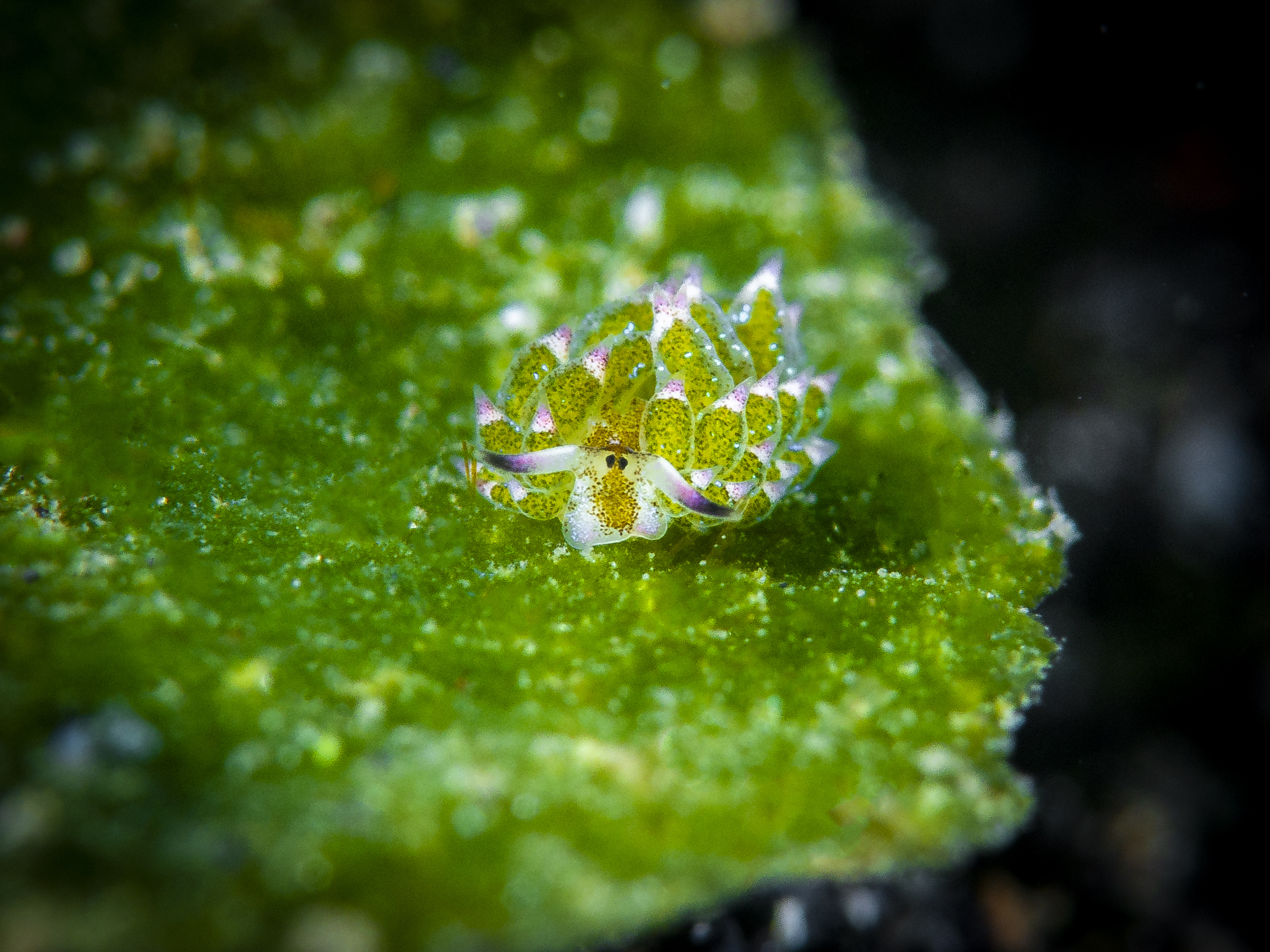Pikmin’s plant-animal mashups don’t exist — but sun-powered animals do
These hybrids may have the best of both worlds when it
comes to food

All Pikmin sport a single leaf that can develop into a flower. Pikmin might host these leafy additions to get an added energy boost.
Nintendo
In the Pikmin video games, strange beings known as Pikmin help you survive on an alien planet. Each brightly colored Pikmin starts off as a sapling with root-like toes and a single leaf on its head. As the creature matures, the leaf transitions into a flower.
But these plant-like lifeforms behave like animals. Pikmin cooperate to forage for nectar, hunt giant creatures and haul prey back to their nests. Some clear obstacles with explosive rocks. Others breathe underwater using gills.
Plants here on Earth aren’t quite that talented. However, says Holly Moeller, “It’s not unheard of for an animal to be able to practice a bit of photosynthesis.” Known as mixotrophs, such creatures fuel themselves by harnessing sun energy, like plants do, and eating other organisms, like animals do. Some of these animals get their light-absorbing powers from microbes stored in their bodies. Others do it by stealing energy-producing chloroplasts from the food they eat.
Some mixotrophs even look like they’re growing their own tiny leaves, just like a Pikmin.
Two-in-one
Pikmin are most likely animals, says Moeller, a plankton ecologist from the University of California, Santa Barbara. Despite their leaves, Pikmin move on their own and work in groups. This suggests that they have a complex nervous system.
Pikmin might be a mix of two different species. While they look like a single organism, these leafy critters might in fact be animals that host a plant or alga in their body, says Moeller. Like plants, most algae practice photosynthesis. They have special structures called chloroplasts that convert light and carbon dioxide into sugars. Certain animals in the real world have come to rely on these solar-powered algae for food.
Stony corals are one example. These corals often look like plants, but they are actually colorful cousins of jellyfish. Their calcium carbonate skeletons keep them anchored in one place. At night, most corals hunt using stinging tentacles. And corals aren’t picky. They’ll feast on everything from small fish and floating eggs to microscopic animals called zooplankton.
Corals living along tropical coasts can’t rely on hunting, though, to get enough energy. Coral reefs — the buildup of hundreds of years of coral skeletons — attract divers and snorkelers because of their crystal-clear waters, notes Moeller. But these unclouded views often mean there’s little food for corals to eat.
Tropical corals make up for this food shortage by housing algae known as zooxanthellae (Zoh-uh-ZAN-thuh-lay) in their tissues. These reef-building corals set up shop in shallow water where they are exposed to plenty of sunlight. The corals offer these algae carbon dioxide and shelter.
Safely tucked away, the algae produce sugars and amino acids. The corals get most of their nutrition from these substances. Up to 90 percent of the materials the algae photosynthesize are passed on to their coral hosts. The corals use these compounds for food and to grow their exoskeleton.
Solar slugs
Not all animals that get energy through photosynthesis are as great about sharing as corals and their zooxanthellae. Some sea slugs steal chloroplasts from the algae they eat, in a process called kleptoplasty (KLEP-toh-plass-tee).
Sacoglossan (Sak-oh-GLAH-sahn) or “sap-sucking” sea slugs use tiny teeth to pierce algae and slurp up their innards. Certain slugs from this group stockpile chloroplasts from these meals in digestive glands lining their thin bodies. The leftover chloroplasts help supplement the slugs’ diets, especially when algae are scarce.

Unlike corals, these slugs get most of their nutrition from digesting the algae itself, says Terrence Gosliner. This marine biologist studies sea slugs at the California Academy of Sciences in San Francisco.
The chloroplasts are often hidden in the slugs’ bodies within fleshy folds called parapodia. “If you open up the parapodia, the inside is just this bright green from the chloroplasts,” says Gosliner.
Some slug species can keep using the same chloroplasts for nearly a year. But that kind of mileage is highly unusual, says Gosliner. Most sacoglossan slugs maintain their energy-harvesting machinery for a couple of weeks, at most. They must regularly replace their chloroplasts.
Could a Pikmin be hoarding chloroplasts from food it eats in the leafy structure on its head? Probably not. Animals that steal chloroplasts tend to be slow-moving, says Gosliner. Chloroplasts wouldn’t provide enough energy to fuel the lifting, sprinting and battling Pikmin do every day. This would lead to Pikmin using more energy than they consume. “And if [an action] requires more energy than you’re capturing, you’re not going to last long.”
Also, Pikmin would need a lot more leaves to soak up sunlight like sea slugs. Slugs that photosynthesize often sport lots of leaf-like appendages, says Gosliner. All that surface area lets them support more energy-producing chloroplasts. “Rather than a single leaf, you’d see a head of lettuce growing on the top of the head,” says Gosliner.
But Pikmin might have another use for that foliage atop their heads. It could be used to lure prey. The flower could attract insects looking for a sip of nectar, says Gosliner. “They could be fooling pollinators to come closer before scarfing them up.” In that way, Pikmin could just be big Venus flytraps with legs.







